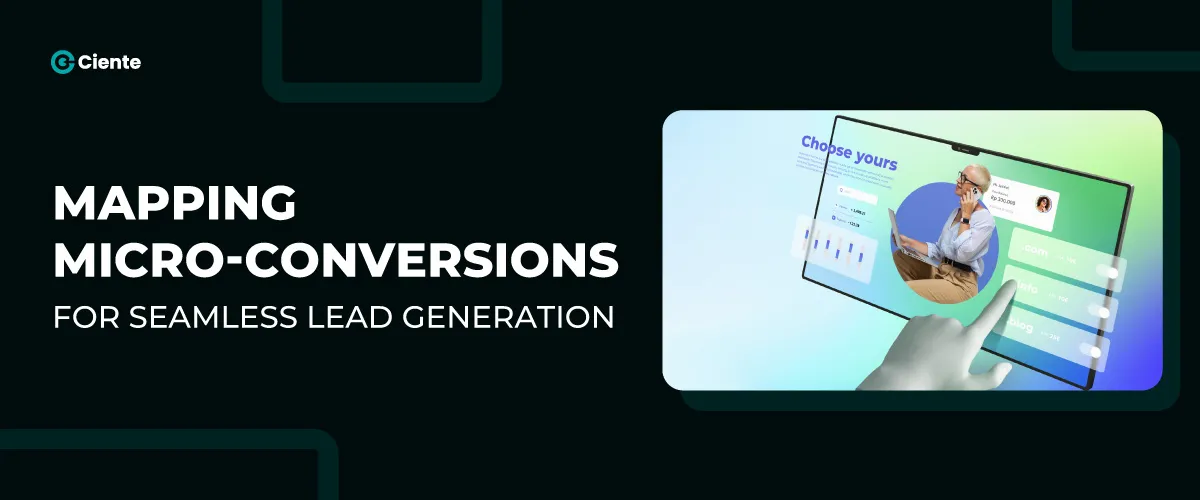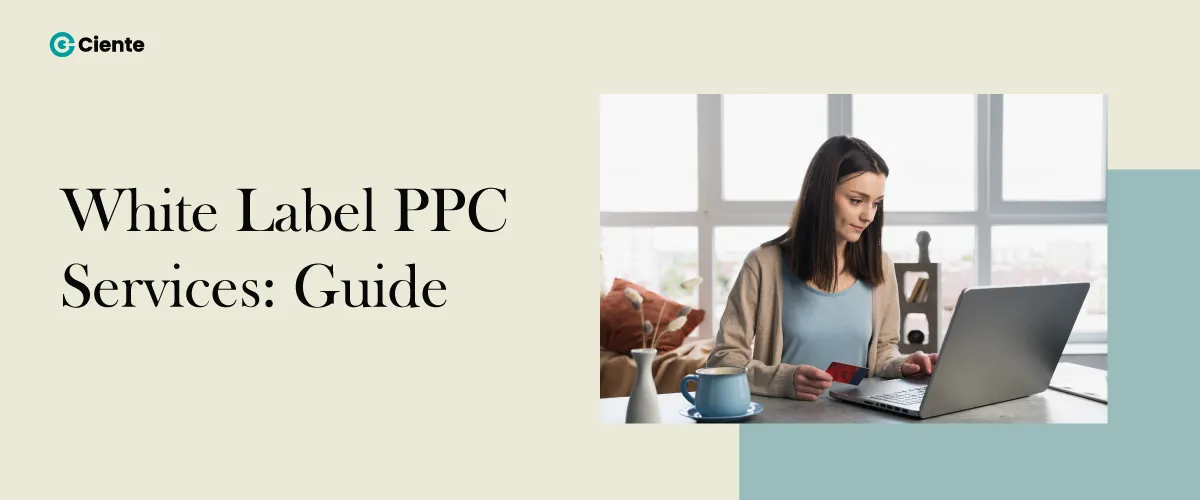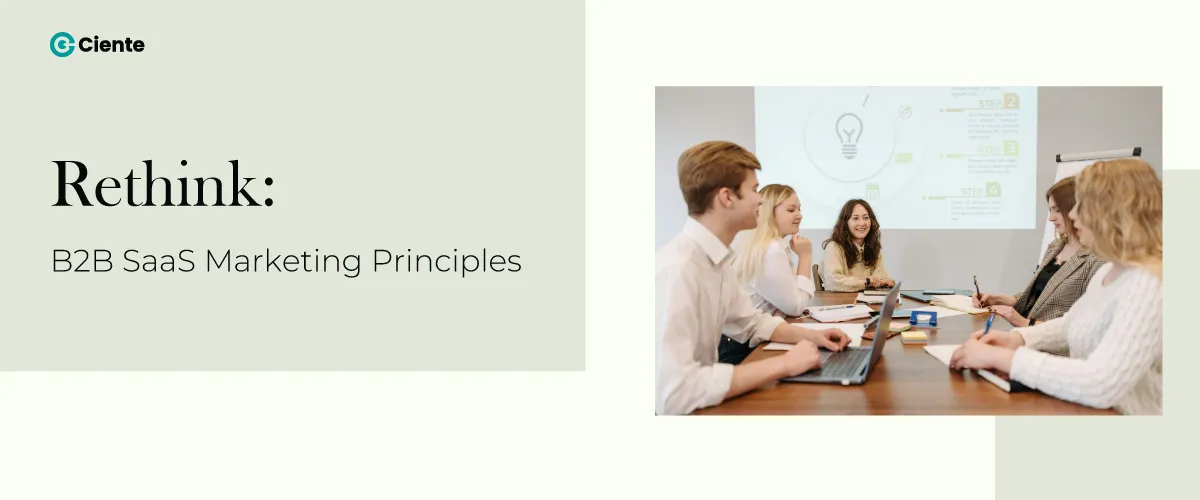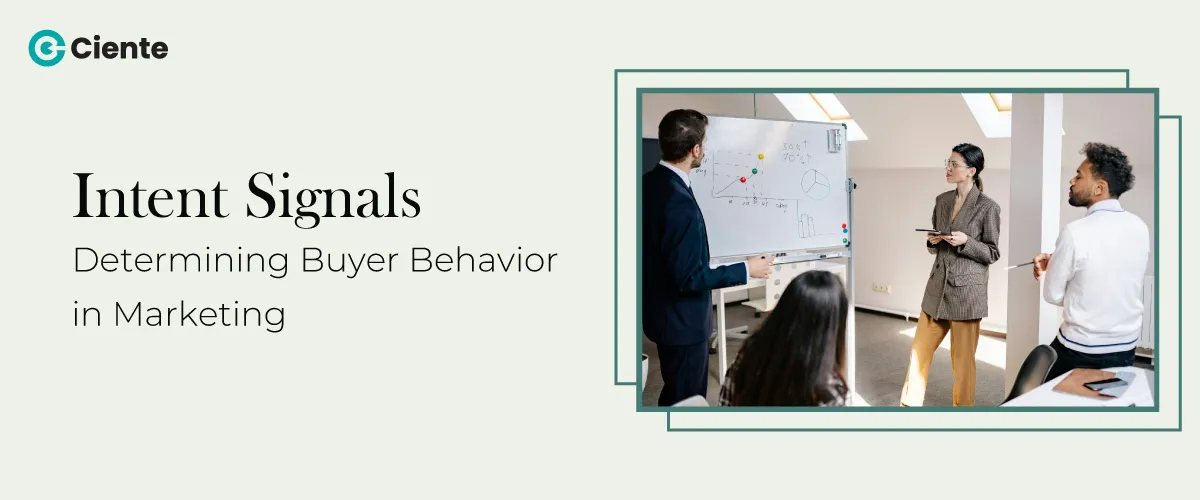Micro Conversion Ideas for Lead Generation
Predicting the buyer’s next step has become paramount for marketers. And tech has granted them their wish – measurable buyer digital breadcrumbs.
Focusing on each potential buyer’s attribute is necessary. Yes, the buyer journey is not as simple to track and is quite complex, but watching a prospect’s every minute step can add momentum to a brand’s conversion rates.
Every form of engagement is crucial. Negating any of them, say, clicking on a link or watching product videos, can cost the brand a potential customer.
Actions such as lead submissions or completed purchases are always under a marketer’s eye – ready to be tracked. These contribute directly to the revenue stream, affect the KPIs, or influence overarching business objectives.
On the contrary, there are particular actions the prospect undertakes that are often not considered as important – micro conversions. They are intermediate and should be mapped as the first significant step toward a potential purchase. Micro-conversions, as the name states, are minute and don’t necessarily affect the revenue stream. But there is potential here which should not be missed out on.
Tracking micro-conversions involves considering a user’s engagement journey and progression. This could comprise signing up for a newsletter, clicking on a particular link, or spending a specific amount of time on a landing page. These actions carry the essence of their interest; even if it’s not substantial, there remains a glimmer.
This is the purpose behind considering micro-conversions during lead generation. They carry the minute possibility of being nurtured and converted because fires can also be lit through merely a spark.
Micro-conversions: digital breadcrumbs to know your buyer.
While macro-conversions are paramount, micro-conversions offer a better understanding of the prospective buyer. Significant actions undertaken during the buyer journey offer glimpses into their actions, helping marketers better understand why and when users move forward during the conversion process.
It is easier to pinpoint different influences and identify the ones that lead to frequent drop-offs.
In other words, micro-conversions are significant for conversion-rate optimization. But not all conversions are of equal measure – macro and micro – as detailed above. The significance of both these forms of engagement varies, but today’s marketers say it shouldn’t.
With lead generation being one of the most complex and long marketing processes, seamless lead engagement is a requirement. So, while most brands cut down on unnecessary steps, maybe it’s time to add another – highlighting and detailing user interest.
Types of Micro-Conversion
Micro-conversions are of the following types –
Website-based micro conversion:
Website engagements are widely understood as the first touchpoint of a buyer’s journey. This can include clicking on a banner ad, signing up for a newsletter, downloading whitepapers, filling out a form, or spending time on pricing or service pages.
However small this interaction might be, it shows the level of intent the prospect holds – at least at a stage where they are still doubtful of their choice. The brand’s website could be engaging enough to attract prospects or have different but personalized offerings compared to the competition.
Content-centric:
Videos – At times, browsing multiple pages of text might not be as effective as watching a short video. The latter states that the user wants to listen to what the brand says rather than skimming through random words. It’s quite a compelling and interactive content type that resonates key information and showcases the brand’s personality.
Provided the world is hooked on snackable content, video has become the key to attracting user interest and concretizing their attention in stone.
Remember Jaguar and the conversation surrounding their first-ever campaign offering a sneak peek into their rebranding efforts? At a time when attention is deficit, it’s all that marketers want from the prospects. What’s better than curating a high-quality video campaign?
Downloads – The next step of content-centric intent is downloading. Most prospects barely spend time on a landing page, let alone fill out a form and download resources. So, if they do so, it highlights a relatively higher level of interest.
Why? Frankly, they are ready to spend a few minutes filling out the form and providing the brand with their contact details for further nurturing.
They wish to seek the brand’s opinion on a particular topic and understand their approach, thus indirectly instituting that brand as one they trust. This micro-conversion step exemplifies that these resources are valuable to the user and align with their needs.
Social media – How much of our daily routine also involves scrolling through social media platforms? Frankly, quite a lot. When users find content interesting enough to share on social media, maybe the brand is doing something right.
If prospective clients share the content on their social media, they find it authentic and compelling enough to tell their audience. It’s not an easy feat to develop highly eye-catching content that is also informative and original enough.
But marketing is all about experimentation and adding real value, right? Tracking micro-conversions such as these helps brands find the right balance.
Testimonials and UGC:
These are integral parts of social proofs centering around a brand – from reviews to social media following. It is a sign of trust and credibility for the brand, which enhances its reputation and customer experiences.
People rely on others – this is how word-of-mouth marketing held significance for a long time. Potential buyers in the current market depend on online product reviews and testimonials to gauge whether a brand is the right fit for them. The same goes for user-generated content.
However, a social media following is a bit different. When someone follows a brand, it showcases a steadfast interest and the need to keep up. Consider a scenario – a user follows Apple on Instagram after consistently buying new iPhone models for a decade. As a frequent user of Apple products, the user also wants to keep up with recent upgrades in their old models or new products that might interest him.
It adds to a positive brand image – the brand’s products or marketing tactics were able to convert a one-time buyer into a loyal customer.
While previously, marketers and decision-makers only cared about the bottom line, modern marketing has derailed them. It’s never been easy to convert a prospect, but with diverse tech advancements in tow, marketers aim to do more with less.
However, tech advancements are not available to everyone or every business. Small businesses cannot afford to waste resources on new-age tools, not knowing whether they will reap benefits or a significant ROI.
Why is it crucial to measure micro-conversions?
This is a huge hiccup for them, but what is the most effective road here? – Tracking the metrics at hand. The trivial actions taken by the prospective buyers have become quite resourceful tools for small businesses to leverage.
Both micro and macro-conversions are part of the parcel. They don’t exist in isolation from each other. Instead, it’s much simpler to say that the micro-actions lead to macro-conversions.
Micro-conversations include website visits, translate to growing interest, and result in a purchase or a drop-off. The final stage, after tracking a micro-conversation, heavily depends on the marketing efforts.
The bridge to a successful sale is not easy, even if the prospect illustrates 0.1% interest in the brand. It requires consistent nurturing and follow-ups to bear fruits. And micro-conversions offer a direction onto the facets that enable a positive buyer journey – understanding the audience.
When marketing and sales build a conversion funnel, there are several aspects to consider, but two of them remain the priority – possible friction/pain points and influences. These are addressed through personalized campaigns that directly engage the prospect.
Tailoring the approach again depends on the insights derived from the micro-conversions.
It’s all about the small interactions that keep the prospects engaged. These interactions elevate the chances of conversion and foster a positive progression down the sales funnel.
Micro-conversions map out the entire buyer journey – whether intentionally or unintentionally. These trivial actions undertaken by prospective buyers pinpoint the exact time during which they illustrated the maximum interest.
How does it add substance to macro-conversion-centric marketing strategies?
Gauging this can help marketers enhance their strategies around that specific action and time. This is one of the reasons why it’s at the wheel of conversion rate optimization. With the correct map, the insights derived from tracking the micro-conversions will provide accurate data to refine the guidance through the funnel.
The result? Enhanced user engagement and a positive experience, leading to a long-lasting relationship with the client. Thus, mapping how the browser interacts with the brand content is significant for communicating with them.
Yes, this is quite a repetitive stance, but it does not adequately illustrate its necessities.
Sometimes, users require a nudge to make the right decisions. They might download the eGuides and engage with the weekly newsletter, but this doesn’t reach the consultation stage. Why?
Even the little bouts of hesitation can deter the prospect and make them drop off from the funnel. Micro-conversions also identify the reasons for this. By addressing the challenges customers face in continuing their journey, marketing can smoothen the friction by removing the bottlenecks.
Lead generation should be intuitive rather than follow a single rule. For example, if the users’ watch time for the product video is too short, then a follow-up email can assist in retrieving their attention.
Now that we have outlined a brief explanation of micro-conversions and why they are vital to track, mapping out how to measure them is the succeeding step.
How can brands effectively track micro-conversions?
The primary step toward measuring micro-conversions is setting up the goals – SMART ones at that. SMART goals allude to Specific, Measurable, Achievable, Relevant, and Timely (time-bound). Outlining these objectives locates how the results from tracking micro-converters align with the brand objectives.
The next step is pinpointing the micro-conversion stage the team wants to highlight. This distinguishes the different forms of engagement undertaken by users to define the criteria for micro-conversions.
After these initial stages, track the micro-conversions according to user segmentation – browser behavior and demographics. It assists in pattern and trend identification to derive informed insights into why a buyer might be considering a purchase. Segmenting the audience will allow marketers to set specific micro-goals based on each user. Because data insights carry vital weight in helping the brand understand who their potential buyer is/could be.
However, tracking micro-conversions is not the end road – test the waters. It highlights the areas of improvement and their effectiveness, helping to understand the differences between high and low-converting channels. This is executed through meticulous A/B testing strategies where one landing page might be experimented against another to gauge which translates to high conversion rates.
A/B testing also works seamlessly to test varied CTA positioning to improve the website experience.
Outline attainable goals => Identify the micro-conversion stage to track => Set individual goals based on audience segments => Testing alternatives for improvement.
These steps are necessary for businesses that wish to enhance their digital presence – from improvements in UX designs to landing pages. Micro-conversions help tailor the approaches for a more comprehensive user journey, especially one that boosts their conversion potential and significantly lowers the drop-off rates.
But how can a brand ensure the strategies they follow reaps benefits for them?
Most strategies do not work as guidelines and should be agile enough for brands to adopt. However, some generic best practices executed by marketing agencies can still help study the buyer progression and negate any friction in the sales funnel – leveraging micro-conversions.
What are the best practices to effectively translate micro-conversions into purchases?
Optimize user journey:
A brand’s website is the first touchpoint – the primary focus should be the UX design for linear movement. Rather than confusing the browsers, they should be able to find the right content at the right time. To do so, a clear CTA should be designed to help users progress across different landing pages and reach the required resources.
The brand website should be accessible and engaging across all available devices. This fosters a positive customer experience, enabling them to make a purchasing decision.
Personalization:
Investing in content marketing can do wonders for an organization, especially small businesses. User segmentation can effortlessly help leverage accurate data to customize brand solutions. Once the solutions and content are tailored, it is easier to boost engagement by increasing content relevancy.
When the solutions appeal and offer value to prospective buyers, it increases their inclination towards a profitable decision. The more dynamic the content strategy, the easier it is to craft messages that fit diverse user requirements in real-time.
Social proof building:
Building a strong social proof presence builds trust and credibility for the brand. It is crucial to encourage clients to leave reviews to construct a presence and a positive reputation in the market.
Especially social proofs, such as Google reviews, help instill a trustworthy factor in the brand and attract the right audience. But it’s not one-sided. When a brand engages with customers as they leave reviews and comments, it illustrates they are ready to learn from their mistakes. And entail space for improvements and upgrades.
Micro-conversions are all about the buyer experience.
With complexities and similar products rampant in the market, it’s difficult to understand what buyers want. Buyer behavior is consistently changing, and modern marketing techniques disrupt a consistent flow in the buyer journey.
This is a loop. With buyer behaviors, market dynamics also transform to equip them, and buyers make decisions differently than one might imagine – never linear but an enclosed circle.
To make this to-and-fro easier, marketers have leveraged micro-conversions and optimized their strategies. This works in real time. When users have little interaction, marketers can rehash individual steps rather than change the entire plan.
Overall, micro-conversions define a buyer’s journey, and the derived data outlines their experience. The journey has to be smooth to reach the destination safely.
In simple words, measuring micro-conversions is all about killing multiple birds with one stone, compared to focusing on a single one.







